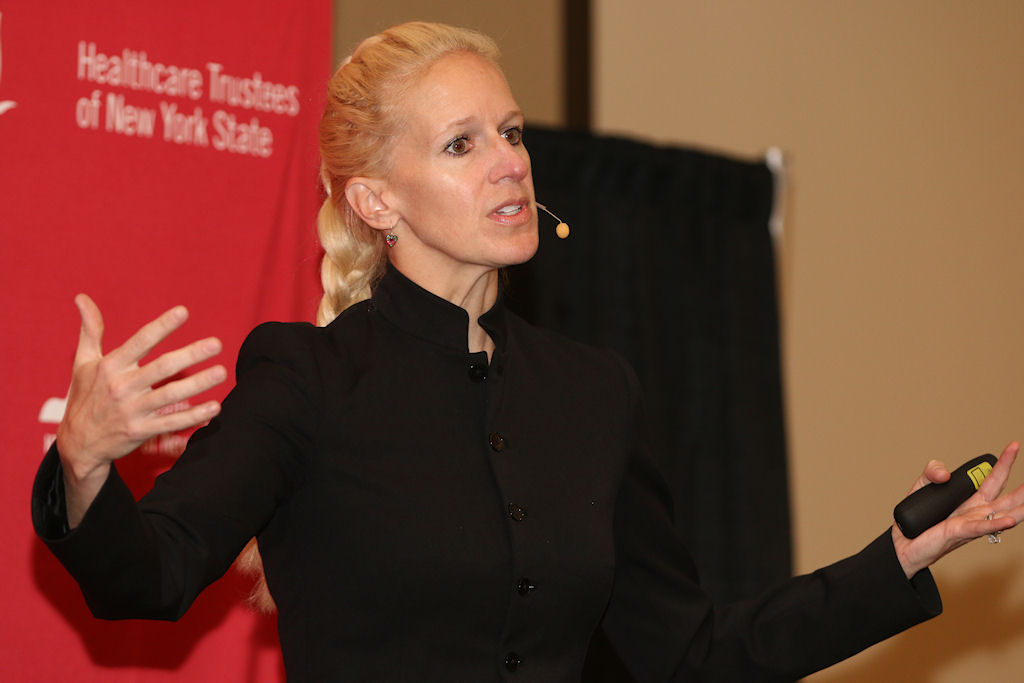Dr. Adrienne Boissy is Chief Experience Officer at the Cleveland Clinic, host of the 8th Annual Patient Experience Summit taking place May 22-24.
Dr. Adrienne Boissy of the Cleveland Clinic.
The Cleveland Clinic Empathy video that came out in 2013 not only went viral – it brought tears to the eyes of stoics and cynics alike. Just under 4 ½ minutes long, the video does something radically simple – captures the internal thoughts and fears of patients and caregivers in a hospital setting. Its power lingers.
But interestingly, the video wasn’t actually intended for consumers – it was created by the Cleveland Clinic to encourage it’s over 40,000 employees to be more empathetic. Did it succeed? Maybe – but what it most certainly did do was push the concept of empathy to the fore in the debate about healthcare and quality.
This month, the Cleveland Clinic hosts its 8th Annual Patient Experience Summit under the theme “Empathy by Design,” featuring expert speakers, panel discussions and workshops representing multiple healthcare professions and disciplines engaged in exploring innovative ways to create and sustain a human-centric environment. Topics will focus on the current trends and global interest in patient experience among disciplines both in and outside of the healthcare field.
But becoming an international leader in empathy and human-centered healthcare was no quick feat for the Clinic.
“We’ve evolved,” said Dr. Adrienne Boissy, Chief Experience Officer at the Cleveland Clinic. “Ten years ago (CEO) Toby (Cosgrove) started us on this journey and we didn’t know where it would go. At the time, we had less than 10% in patient satisfaction – even though we had a reputation for excellence as an institution. It was a decade-long journey in how patients perceived us.”
How did they do it? The Clinic leads with what it calls “a culture of improvement,” using a combination of principles popular in the field – Lean, CI (Clinical Integration), design thinking – all across the system. They worked on the internal culture first, making caregivers priority #1 while focusing on safe, high-quality, high-value care for the patient.
They also designed a more robust system to evaluate process, doing a data deep dive then trying different methodologies to explore what worked.
“We had to figure out which method to deploy when,” said Boissy. “This is the future of the field. How are we going to negotiate this? What does design thinking and CI mean? What matters most?”
These are questions many are struggling with across healthcare, with Lean seeming to dominate in many environments. But the human-centered approach of design thinking is a uniquely powerful tool when it comes to determining what is right and good for the patient - and empathy governs that approach.
The Clinic’s website bears the words: “Empathy is our watchword. It’s how we view each patient who comes through our doors.” They’ve created a 360 virtual tour to show how to reduce suffering, and asked the question ‘How might we create spaces that are more healing?’ They also walk caregivers through the space, listen to patient advisory councils, and strive to engage stakeholders on every level that’s meaningful to them.
“How can we innovate, anticipate and exceed expectations,” said Boissy. “That’s where my heart is.”
Where have these questions led? Often to problems that medical professionals and caregivers may have overlooked or under-valued.
“In the end, my patients want to know how to get across the parking lot when it’s icy,” Boissy said.
At The Better Lab, we believe that it’s discoveries such as these that lie at the heart of the design thinking process. How do we measure and define patient engagement and satisfaction? What matters most to those we serve? By engaging deeply with the user, we can identify unmet needs and priorities. And by co-designing solutions with those involved in the process, we can work to make meaningful strides toward a definition and practice of health that models not just empathy, but humility.
Like recognizing that getting across the parking lot is the chief concern of a patient. Or that just getting to the hospital can be one of the biggest barriers and sources of stress for a patient and her family.
“Transportation is going to be a design disruptor,” Boissy said.
Other seemingly obvious conclusions that can have profound impact on experience? “People don’t want to wait. Stop calling the waiting room the waiting room – and have self-rooming.
“The patient experience of the future is helping to inform patients and co-design around access, transparency, waiting, and service.”
And, another big deal: provider burn-out. “You can’t be at the forefront if you don’t talk about caregivers,” Boissy said. “54% of our caregivers are burned out.”
These are just a few of the small-big revelations that will continue to shape the future of health in our communities. There's a lot more to learn when we ask, listen, and embrace the limitations of our own experiences and perspectives.
“We have a role in modeling the empathy we want to see in the world,” Boissy said.
“We are tripping forward.”
Learn more about the 2017 Patient Experience Summit: Empathy + Innovation.
Watch Dr. Adrienne Boissy's TED talk.


